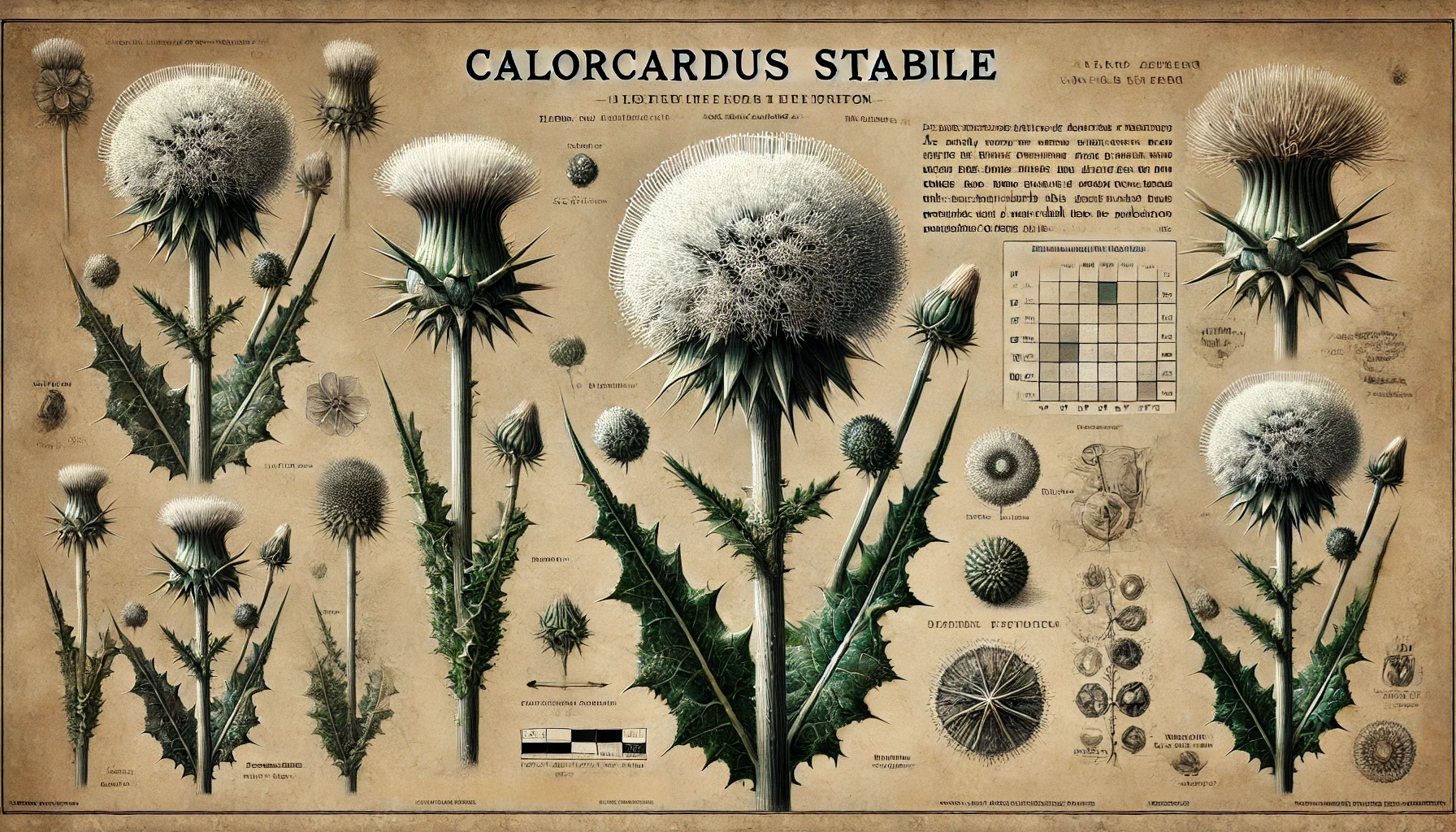Visual Description
Thermo-Thistle stands tall and straight, its pale white stalks resilient against wind and frost. Atop each stem blooms a crown of radiant white thistle, with fine bristles that shimmer like frost but reveal dew droplets when viewed closely—beading along the tips no matter how hot or cold the surrounding air.
This delicate dew is not condensation, but a natural secretion that helps regulate internal heat transfer, giving the plant its thermoregulatory reputation.
Habitat and Growth
The Thermo-Thistle thrives in harsh, transitional environments: coastal dunes, arctic shorelines, and exposed tundra shelves where salt, wind, and temperature extremes meet.
Its seed dispersal is tied directly to its thermal responsiveness: on cold mornings, the plant warms itself just enough to generate an updraft, releasing its white, fluffy seeds to ride the warm air inland or along coastlines. The effect can resemble a silent snowfall in reverse—seeds drifting skyward in curling spirals.
Alchemical Use and Preparation
The thistle heads, when distilled, yield a concentrated fluid that delivers rapid internal warmth without spiking heart rate or overcompensating—unlike many fire-aligned reagents.
This essence is widely used in cold-weather survival kits, post-magic exhaustion tonics, and by those entering ancient ruins or caverns where sudden drops in body temperature are a threat. It is particularly prized for its consistency and safety.
Harvesting should be done at midday, when the plant’s thermal balance is stable and dew output is at its peak. If stored improperly—especially in moist containers—the dew becomes inert and can spoil the extraction process.
Warnings and Curiosities
The thistle’s outer bristles, while soft in appearance, carry minute chemical irritants that can cause itching, dryness, or mild rash if handled bare-handed. Proper harvesting involves the use of light protective mesh or waxed linen wraps.
It is sometimes mistaken for Arctic Cotton, a similar-looking plant found nearby, though that species lacks both heat emission and dew production.
Researchers have noted that the Thermo-Thistle's updraft seeds tend to avoid heavy magical interference, suggesting some innate sensitivity to arcane disruption.
Historical Notes and Folklore
Among the wind-battered coasts and frost-hardened settlements of the north, Thermo-Thistle became a staple long before its alchemical properties were fully understood. Families would gather the dried stalks and bristle crowns at midday and pack them into linen-wrapped wall crevices, bed frames, or travel cloaks—not for fire, but for gentle, sustained warmth.
In homes built from stone and driftwood, the thistle’s slow-release heat was enough to take the edge off night frost, especially in places where open flame posed risks to thatch or stored goods.
Seed Lift Behavior
In calm coastal air, Thermo-Thistle seeds have been observed rising vertically in spirals without wind. Recent studies suggest the plant can generate a temperature gradient sharp enough to cause this lift even in low-pressure conditions.
“The thistle doesn’t wait for wind. It makes its own.”
— Naraen Hylt, botanical surveyor
Compound Instability
When paired with Glacial Mint in experimental potions, Thermo-Thistle extract may cancel both effects, resulting in inert mixtures or subtle thermal misfires. This has led to revised labels in Guild-regulated alchemical kits:
“Do not blend with inverse-aspect cooling herbs without an isolating binder.”
Harvest Gloves Required
Though rarely dangerous, the fine hairs of Thermo-Thistle heads can cause itching or dryness when handled repeatedly. Most field harvesters use waxed linen wraps or nettle-thread gloves to avoid skin irritation.
Passive Thermal Mesh
Excerpt from expedition log of Jalen Tross
“Pressed and layered Thermo-Thistle heads between two sheets of stitched canvas. Hung it above the cot in a ventless shelter overnight—internal temperature rose by five degrees without lighting a flame. No noticeable moisture accumulation. Lightweight. Will try lining cloak next.”


Comments